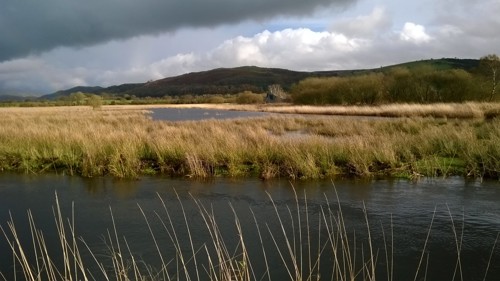National Nature Reserves
What are National Nature Reserves (NNRs)?
There are National Nature Reserves all over the UK. They were set up to conserve and to allow people to study their wildlife, habitats or geological features of special interest.
Today, most of our nature reserves are open to everyone to explore, to learn about and to enjoy.
Where are our NNRs and what do they include?
Wales has 76 National Nature Reserves that help protect a wide range of wildlife and landscapes. These sites include:
-
The high mountain summits of Snowdon, home to some of the UK’s most ancient plant species
-
The sweeping sand dunes of Morfa Harlech and Morfa Dyffryn,including mud flats and salt marshes that are important feeding grounds for winter wildfowl
-
The ancient oak woodlands of Maentwrog in the Vale of Ffestiniog, home to some 170 species of lichen
-
The peat bogs of Cors Caron in Ceredigion,which contain plants, such as sun-dews, bog rosemary and cotton grasses, that have adapted to the acidic conditions
-
The remote islands off the Pembrokeshire coast, such as Skomer, which is one of the most important seabird breeding sites in southern Britain
How are NNRs designated and protected?
Although most of our nature reserves are open for everyone to enjoy, their wildlife and habitats are often extremely fragile and protected by law.
All National Nature Reserves (NNRs) in Wales are legally protected as Sites of Special Scientific Interest (SSSI). Most are also declared under the EU Habitats Directive as Special Areas of Conservation (SAC), Special Protection Areas (SPA) or Ramsar (wetlands). These designations provide further legal protection.
Natural Resources Wales selects and designates National Nature Reserves in Wales under the National Parks and Access to the Countryside Act 1949, or under the Wildlife and Countryside Act 1981.
Find designation documents related to protected areas of land and sea
Visiting nature reserves
All NNRs are open to the public unless there are health and safety or conservation concerns which require a restriction of access.
Managing these sites requires a delicate balance between encouraging visitors and protecting the reserves.
Access to NNRs may also be restricted in some reserves as a result of hazards such as old mine workings, bogs or marshes.
Find out about some of the National Nature Reserves that you can visit.
How are NNRs managed?
Natural Resources Wales manages 56 of Wales’s National Nature Reserves, either entirely, or in partnership.
Each of our reserves has a Senior Reserve Manager whose job it is to conserve the site, to resolve access issues and to liaise with landowners and visitors.
The other sites are managed either by voluntary bodies, such as the National Trust, the RSPB or the Wildlife Trusts, or by local authorities.
The forests we manage as part of the Welsh Government’s Woodland Estate are certified to the standards of the Forest Stewardship Council® (FSC®). Our licence code is FSC – C115912.
The National Nature Reserves we manage (including woodland on these reserves) are not certified. Some of our visitor information leaflets use a non-compliant FSC® trademark and some of these leaflets may also imply that our National Nature Reserves are certified. Our certification body are aware of this error and have agreed we may use up stocks of these leaflets to avoid wasting them.
